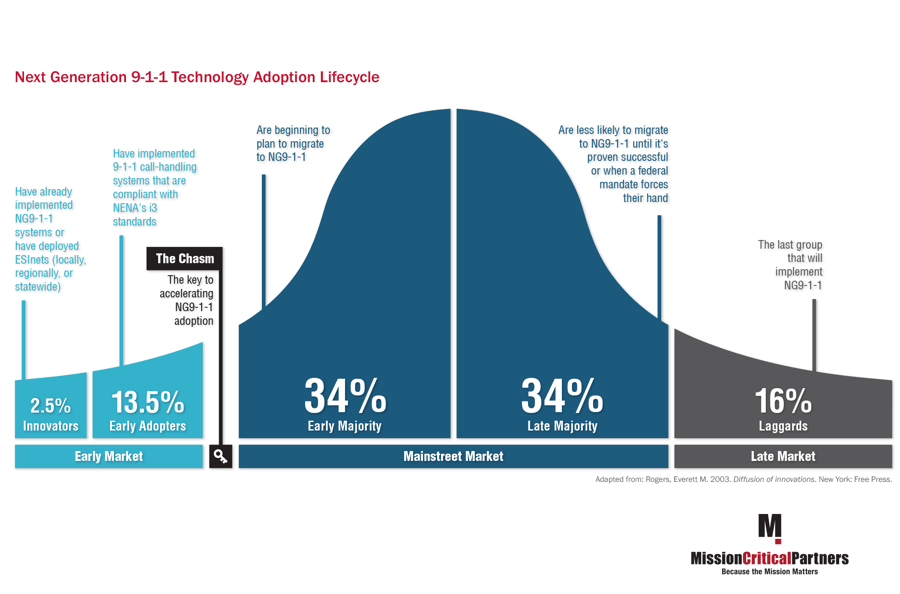Infographic: Next Generation 911 Technology Adoption Lifecycle
In 1962, Everett M. Rogers, an assistant professor of rural sociology at Ohio State University, published a theory he described as the "diffusion of innovations" in a book of the same name. Rogers, who later in his career became a distinguished professor emeritus in the communications and journalism department at the University of New Mexico, developed the theory to describe how innovation adoption plays out in any given social group. Rogers broke the theory down to five distinct categories: innovators, early adopters, early majority, late majority, and laggards.
In this infographic, Mission Critical Partners applies the theory of innovation to public safety, specifically the 911 sector, and takes a look at Next Generation 911 (NG911) adoption. NG911 will be a quantum leap forward in the level of service that the nation's 911 centers can provide to the public and first responders. Migration has been slowed considerably by the sector's inability to shed legacy systems that have been in place for decades.
The key to accelerating NG911 adoption is to more quickly bridge the gap—often referred to as the "chasm"—between early adopters and the early majority. Doing so will create a domino effect that will result in a rapid acceleration in adoption.

Topics: Next Generation 911 Networks, Public Safety Technology, Infographics, 911 and Emergency Communications Centers
Posted on March 31, 2017


